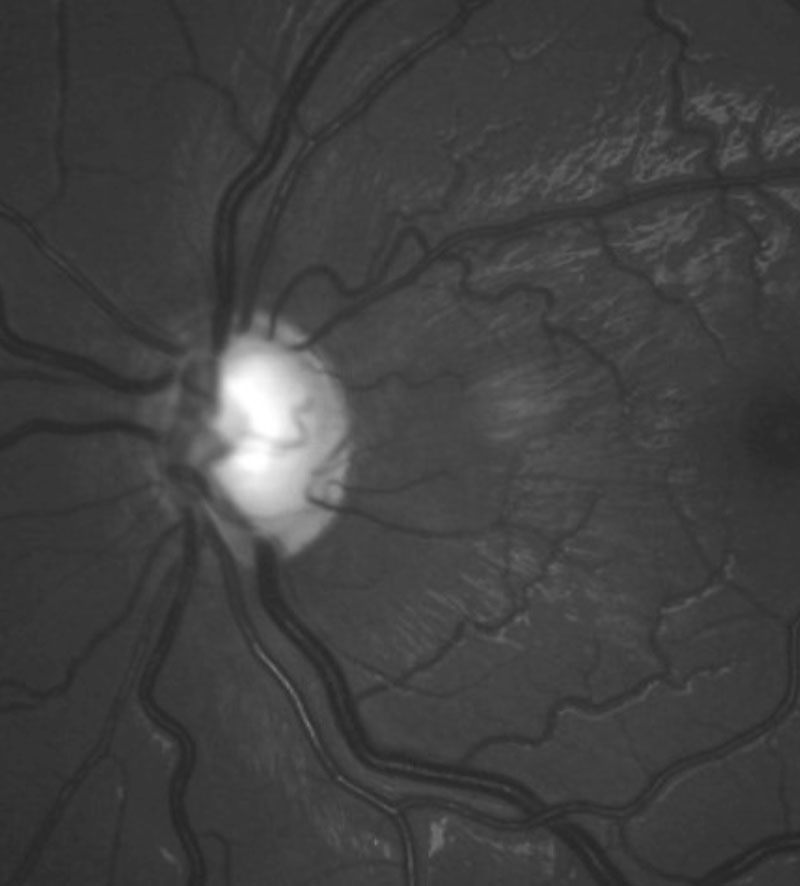 |
| Glaucomatous optic disc of a 13-year-old with IOP of 43mm Hg. Photo: Joseph W. Sowka, OD. Click image to enlarge. |
As is often the case when diseases manifest during physical and emotional development, pediatric glaucoma has consequences that extend far beyond childhood, a recent study confirms. The condition, typically characterized by elevated IOP and optic neuropathy, requires prompt treatment and close monitoring throughout a patient’s life to prevent or minimize vision loss. The literature suggests that long-term management, disease sequelae and uncertain visual outcome may have emotional, social and physical impacts. Recently, researchers explored quality of life issues that adults who had childhood glaucoma continue to face. They interviewed 47 participants from Australia and New Zealand and identified quality of life themes.
The researchers identified 10 quality of life themes from the participants (mean age 40 years, 55% female):
Coping
Emotional well-being
Ocular health concerns
Symptoms
Family planning
Inconveniences
Social well-being
Activity limitations
Economic
Mobility
The researchers reported that participants’ emotional well-being was affected by feelings of being misunderstood due to the rarity of childhood glaucoma, being self-conscious of physical manifestations of the disease and anxiety related to potential disease progression or vision loss. Interestingly, the researchers identified a novel quality of life theme—patient anxiety about their children potentially inheriting their condition and worry about an inability to fulfil parental duties. The researchers noted that participants often sought genetic counseling.
“This study contributes to a very limited body of literature which qualitatively investigates the lived experience of childhood glaucoma in adults,” the researchers noted. They said that nine of the 10 themes were consistent with quality of life reports in adult-onset glaucoma, but family planning was a novel finding.
In participants under 40 years of age and in those without vision impairment or with less frequent review, the researchers observed more maladaptive coping strategies such as treatment nonadherence. “It may be the result of younger individuals not being able to fully grasp the longevity of their glaucoma, having alternate priorities or having negligible activity limitations,” they wrote. “It could additionally be due to nonacceptance of their condition, as seen in adult survivors of retinoblastoma, a childhood ocular cancer, who have been reported to avoid coping with their emotions using internalization. The association between the use of avoidance coping and age is nonetheless an important trend to investigate.”
The researchers say that clinicians should spend time understanding the reasons for nonadherence and how patients judge their need for treatment with regard to other circumstantial stressors. They say their study results will assist with further identification of themes to develop a childhood glaucoma-specific, patient-reported outcome measure.
Knight LSW, Ridge B, Staffieri SE, et al. Quality of life in adults with childhood glaucoma: an interview study. Ophthalmology. September 22, 2021. [Epub ahead of print]. |

